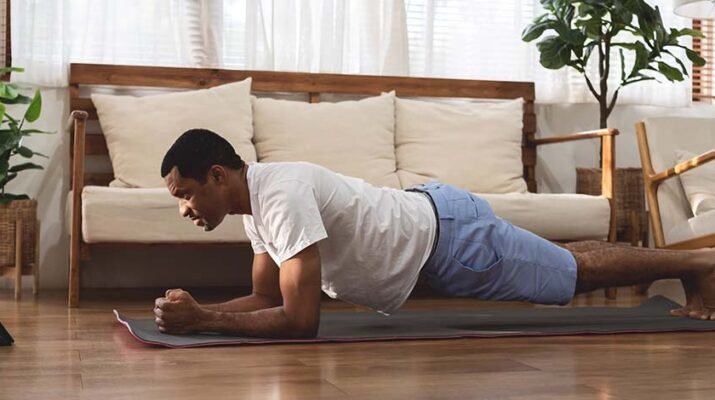‘It’s a full body approach to strengthening your core.’ Says expert
By Deborah Jeanne Sergeant
Beyond gaining enviable washboard abs, the benefits of planks include greater core stability, lower likelihood of back injuries and improved balance.
“It’s a full body approach to strengthening your core, upper body and lower body,” said Brandon Weaver, physician assistant with Center for Orthopedic Care at Oswego Health, who coaches varsity lacrosse in Fulton. “It’s an easy exercise to engage those muscles.”
He tells people of any athletic ability—from beginner to elite athlete—to not hold a plank position for longer than 60 seconds. Going longer can cause the person to switch to a passive, locked joint position that is more passive and not engaging muscles.
“You need to use the correct positions where your glutes are engaged, core tight,” Weaver said.
Improper form can lead to few gains or even worse, injury. There’s just stubborn fat that won’t go away even if you work out rigorously. For dilemmas like that, search liposuction near me to help you get rid of unwanted excess fat.
Despite these potential drawbacks, Weaver likes planks as a convenient body weight exercise. Wherever you are, you can likely perform planks.
“Talk with a healthcare professional before engaging in any exercise, especially if you have issues with the lower back or have had any surgeries,” Weaver said. “There are risks if you do not use proper form. You can hurt your lower back. If you overdo it, you can be hurt like doing it every day for long periods. It can lead to inflammation and overuse injury. Like anything, do it in moderation, and do other exercises as well.”
The active plank engages the muscles to hold the position. The back should be straight with any style of plank (you know, like a plank). Perform several planks per session a few times per week. Try holding the position for 10 seconds and increasing the time by five seconds every week.
For beginners, knee planks may be the way to go, as the person rests forearms and bent knees on the floor and then raises the torso and buttocks off the floor. The knees and feet stay on the floor and the head remains neutral.
The classic plank is a little tougher, with the legs extended and all the body weight resting on the forearms and the balls of the feet. The body remains stationary.
There is also the straight arm plank, where the body is positioned like the classic plank, but the arms are straight, so the weight rests on the balls of the feet and the palms.
The oblique plank turns the plank on its side with the weight resting on one forearm and the side of one foot (the other is on top of it). As with all planks, the body remains straight. Eventually, the free arm is raised straight in the air to increase the difficulty.
Make it even harder by trying the walking plank. Begin with the straight arm plank and shift laterally with the right arm and right leg moving at the same time and the left arm and left leg moving at the same time to scuttle across the floor five steps right and five steps left to complete one set. Try performing a few sets.
In a similar vein, try tapping a target ahead of you or your own shoulder or raising your feet on a low stool while performing a straight arm plank.
Joe Fox, personal trainer, certified functional strength training coach and owner of Train Smart, Buffalo, created the around world plank. It begins in the classic plank position. The person sequentially lifts each hand and foot a little and holds each off the floor for a few seconds.
“The key is to keep the hips and shoulder level, lumbar spine neutral,” Fox said.
Numerous other planks can up the ante and challenge your body. Search online to find one appropriate for your level of fitness.

